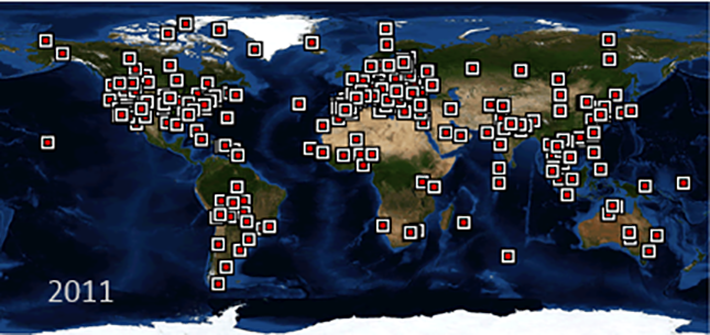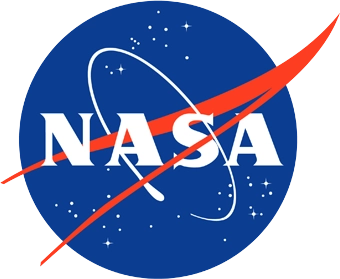Research Page
Biosphere Aerosol Dynamics
Aerosol dynamics are a global phenomena that affect all aspects of remote sensing from the UV through the near infrared spectrum. Thus it is part of the signal for any remote sensing of vegetation, ocean and atmosphere and is critical for quantifying Earth radiative forcing. Due to the high variability of aerosols over space and time, the contribution to the signal can range from insignificant to dominant. The IPCC has reported that aerosols remain the most uncertain component to quantify the anthropogenic forcing of the earth.
It was for these reasons that the Biospheric Sciences Laboratory started the Aerosol Robotic Network (AERONET), a global program to monitor and research the microphysical and radiative properties of aerosols. Aggressively partnering with the international community, AERONET has developed and is still expanding a public domain database that has proved fundamental for atmospherically correcting remotely sensing data, validating satellite retrievals and model estimates of aerosol concentrations, distributions and properties in the atmosphere. Today more than 600 globally distributed sites on all continents and many remote islands are contributing to that database.

Cimel Sun/Sky Radiometer (Courtesy of Brent Holben)
The AERONET program has recently opened up several new remote sensing frontiers by implementing focused high density networks in concert with airborne remote sensing and in situ intensive field campaigns called Distributed Regional Gridded Observation Networks (DRAGON). These networks have been particularly instrumental in studying small scale aerosol patterns near sources and clouds. A subnetwork – AERONET Ocean Color (OC) - addresses bio-optics in the coastal oceans using above-water remote sensing to retrieve normalized water leaving radiances. AERONET has further expanded over the oceans in a surface network called Maritime Aerosol Network (MAN) from ships of opportunity plying the world oceans to characterize aerosol dynamics in unsampled regions from the Antarctic to the Arctic.
AERONET’s success has provided an opportunity for other ground-based networks to develop and promote interdisciplinary research as new areas of research synergy are explored.
Brent Holben: http://aeronet.gsfc.nasa.gov
Alexander Smirnov: http://aeronet.gsfc.nasa.gov/new_web/maritime_aerosol_network.html
Joel Schafer: http://solrad-net.gsfc.nasa.gov
Brent Holben: http://aeronet.gsfc.nasa.gov/new_web/ocean_color.html
It was for these reasons that the Biospheric Sciences Laboratory started the Aerosol Robotic Network (AERONET), a global program to monitor and research the microphysical and radiative properties of aerosols. Aggressively partnering with the international community, AERONET has developed and is still expanding a public domain database that has proved fundamental for atmospherically correcting remotely sensing data, validating satellite retrievals and model estimates of aerosol concentrations, distributions and properties in the atmosphere. Today more than 600 globally distributed sites on all continents and many remote islands are contributing to that database.

Cimel Sun/Sky Radiometer (Courtesy of Brent Holben)
The AERONET program has recently opened up several new remote sensing frontiers by implementing focused high density networks in concert with airborne remote sensing and in situ intensive field campaigns called Distributed Regional Gridded Observation Networks (DRAGON). These networks have been particularly instrumental in studying small scale aerosol patterns near sources and clouds. A subnetwork – AERONET Ocean Color (OC) - addresses bio-optics in the coastal oceans using above-water remote sensing to retrieve normalized water leaving radiances. AERONET has further expanded over the oceans in a surface network called Maritime Aerosol Network (MAN) from ships of opportunity plying the world oceans to characterize aerosol dynamics in unsampled regions from the Antarctic to the Arctic.
AERONET’s success has provided an opportunity for other ground-based networks to develop and promote interdisciplinary research as new areas of research synergy are explored.
Brent Holben: http://aeronet.gsfc.nasa.gov
Alexander Smirnov: http://aeronet.gsfc.nasa.gov/new_web/maritime_aerosol_network.html
Joel Schafer: http://solrad-net.gsfc.nasa.gov
Brent Holben: http://aeronet.gsfc.nasa.gov/new_web/ocean_color.html

